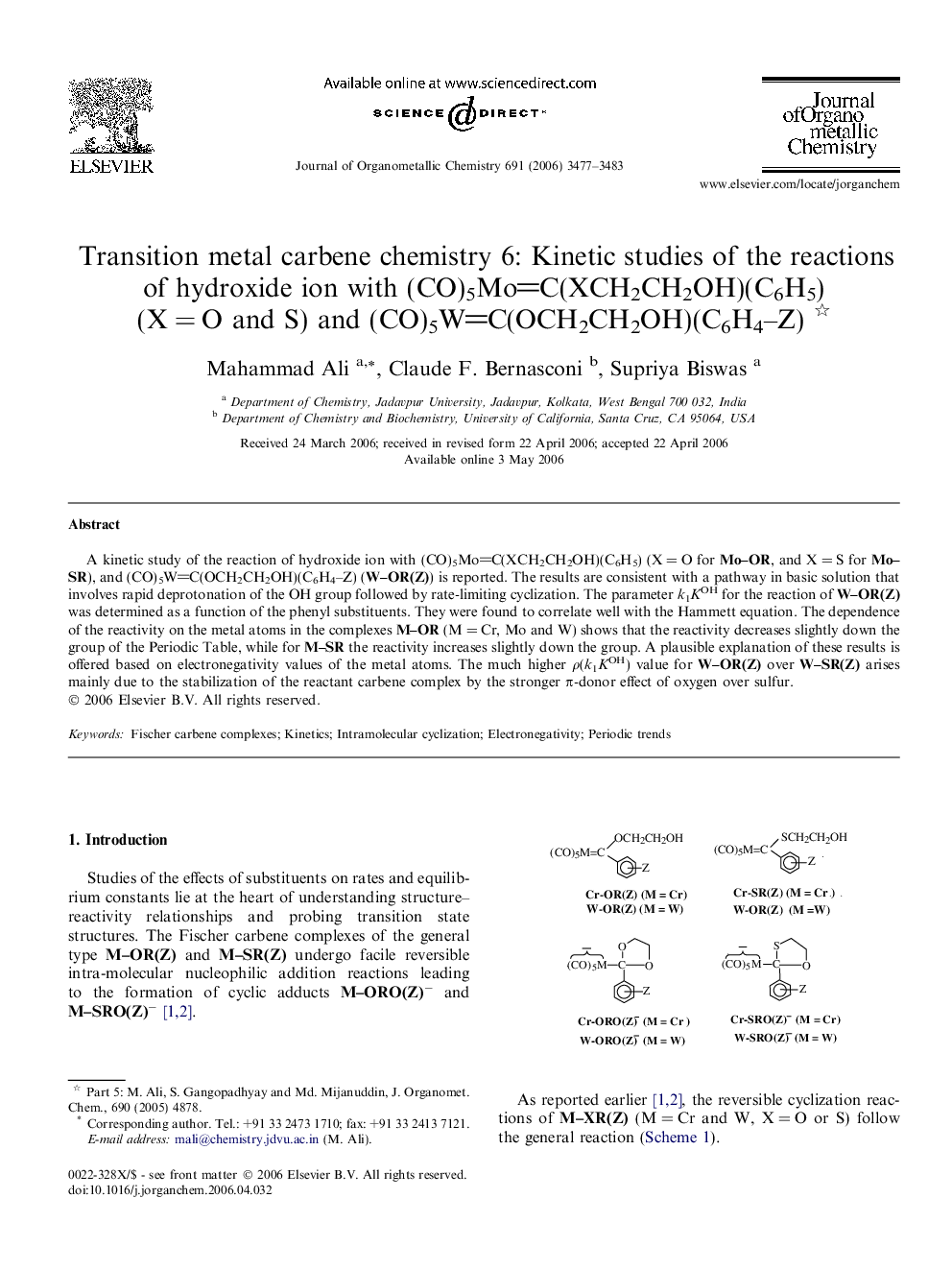| Article ID | Journal | Published Year | Pages | File Type |
|---|---|---|---|---|
| 1325852 | Journal of Organometallic Chemistry | 2006 | 7 Pages |
A kinetic study of the reaction of hydroxide ion with (CO)5MoC(XCH2CH2OH)(C6H5) (X = O for Mo–OR, and X = S for Mo–SR), and (CO)5WC(OCH2CH2OH)(C6H4–Z) (W–OR(Z)) is reported. The results are consistent with a pathway in basic solution that involves rapid deprotonation of the OH group followed by rate-limiting cyclization. The parameter k1KOH for the reaction of W–OR(Z) was determined as a function of the phenyl substituents. They were found to correlate well with the Hammett equation. The dependence of the reactivity on the metal atoms in the complexes M–OR (M = Cr, Mo and W) shows that the reactivity decreases slightly down the group of the Periodic Table, while for M–SR the reactivity increases slightly down the group. A plausible explanation of these results is offered based on electronegativity values of the metal atoms. The much higher ρ(k1KOH) value for W–OR(Z) over W–SR(Z) arises mainly due to the stabilization of the reactant carbene complex by the stronger π-donor effect of oxygen over sulfur.
Graphical abstractA kinetic study of the reaction of hydroxide ion with (CO)5MoC(XCH2CH2OH)(C6H5) (X = O for Mo–OR, and X = S for Mo–SR), and (CO)5WC(OCH2CH2OH)(C6H4–Z) (W–OR(Z)) shows a pathway in basic solutions that involves rapid deprotonation of the OH group followed by rate-limiting cyclization. The much higher ρ(k1KOH) (2.19) value for W–OR(Z) over W–SR(Z) (0.96) arises due to the stabilization of the reactant carbene complex by the stronger π-donor effect of oxygen over sulfur.Figure optionsDownload full-size imageDownload as PowerPoint slide
